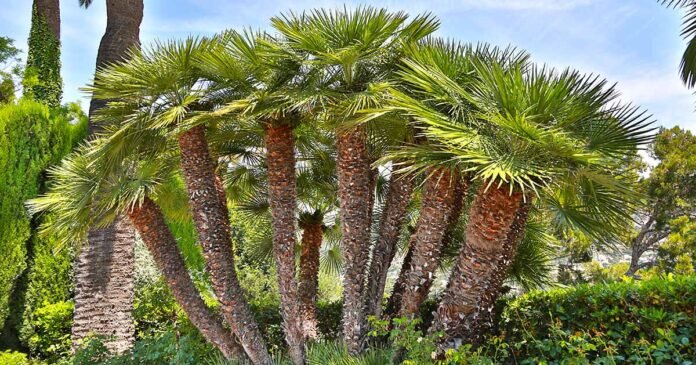Soil
In its native habitat, C. humilis colonizes freely draining, rocky slopes, hot, exposed cliff sides, and dry hills.
In cultivation, this species appreciates similar conditions but tolerates a variety of soil types, so long as the substrate does not retain water.
If your garden soil tends to hold water, consider amending with sand and gravel, or keep your plant in a container instead.
Water
Once established in the landscape, C. humilis is remarkably drought tolerant but will benefit from some supplemental water during dry spells lasting two weeks or more.

For container-grown plants, allow the top inch of soil to dry between waterings, then water thoroughly until excess drains from the bottom of the pot.
Fertilizing
Potted specimens require feeding in the spring, summer, and fall.
A slow release product formulated specifically for palm trees is best applied before watering, to ensure nutrients trickle down to where they’re needed.
Specimens planted in the garden don’t require fertilizer but will benefit from a top dressing of compost in spring and summer.
These extra nutrients will help keep fronds supple and green, and flowers and fruits abundant.
Learn more about fertilizing palms here.
Where to Buy
You can generally find the species plant available from good nurseries or palm specialists.
For example, Fast Growing Trees carries the species plant in a variety of sizes to suit your needs.
While the C. humilis is the only species in its genus, there are a few named cultivars worth considering.
The naturally-occurring variety, C. humilis var. argentea is also known as the Atlas Mountains or silver palm, with striking glaucous, silver-blue fronds. It’s native to North Africa.
Nana
‘Nana’ is a dwarf cultivar that tops out at around four to six feet tall. This one is ideal for growing in containers or in smaller gardens.
Stella
‘Stella’ is another compact cultivar, at five to six feet tall. The fronds are green on the top with silvery undersides, giving the plant a distinctive two-toned appearance in the garden.
Vulcano
Featuring a compact form with a dense, bushy habit, ‘Vulcano’ has petioles with few or no spines.
Mature plants grow to six to eight feet tall making this a compact addition to the landscape.
Maintenance
Cold hardy and resilient, C. humilis is one of the easiest palms to care for.
To keep it looking tidy, remove browned or spent fronds at the base of the leaf petiole with a pair of clean, sharp pruners.


Always cut as close to the trunk as possible without damaging healthy tissue. Occasionally, European fan palm will branch and spread into a multi-trunked clump.
If you prefer a single-stemmed form, you can remove these shoots as they emerge at ground level.



